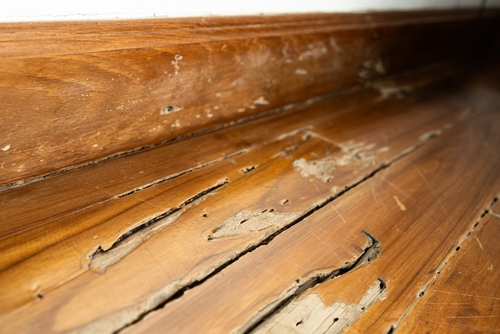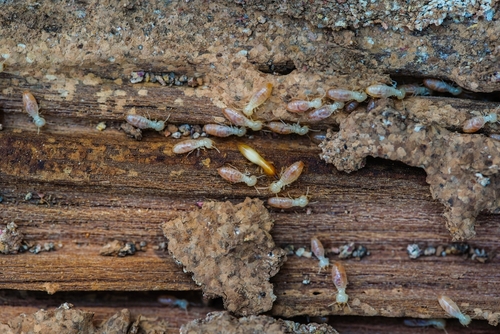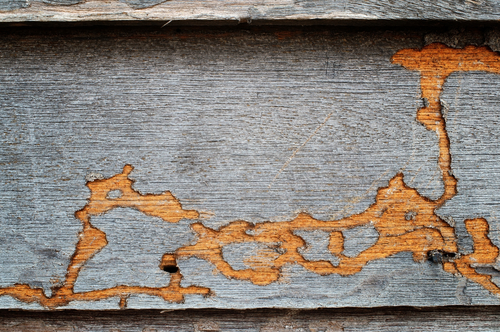
The Lifecycle of Termites: Understanding the Enemy
November 24, 2023
Landscaping Tips to Prevent Termite Infestation
January 30, 2024Post-Treatment Care: Maintaining a Termite-Free Home

Post-Treatment Care Maintaining a Termite-Free Home
Post-Treatment Care: Maintaining a Termite-Free Home. In the warm, humid climate of Singapore, homeowners often face the daunting challenge of termite infestations.
These tiny but destructive pests can cause significant structural damage if not effectively managed.
While professional treatments offer a powerful solution, the real key to maintaining a termite-free home lies in diligent post-treatment care.
This comprehensive guide will walk you through the necessary steps and precautions to ensure that your home remains a stronghold against termite re-invasion.
Understanding Termite Behavior
Life Cycle of Termites: Know Your Enemy
Understanding the life cycle and behavior of termites is crucial in preventing their return.
Termites undergo a complete metamorphosis, progressing from egg to nymph and eventually to adult.
Familiarize yourself with their breeding habits and colony structure to better anticipate and combat their presence.
Signs of Termite Activity: Staying Vigilant
Early detection is key to preventing a full-blown termite invasion.
Look out for telltale signs such as hollow-sounding wood, mud tubes, and frass (termite droppings).
Regularly inspect your property for any changes or new signs of termite activity.
Immediate Post-Treatment Steps

After professional termite treatment, inspect the treated areas to ensure the process is thorough.
Check for any untreated nooks or crannies and ensure all entry points have been addressed.
Post-treatment, ensure your home is well-ventilated to eliminate any lingering chemical odors or residues.
Clean your home thoroughly, but avoid washing away any chemical barriers that have been placed.
Structural Considerations
Home Repairs: Sealing Entry Points
Termites often enter homes through cracks and crevices in the foundation, walls, or roof.
Inspect your home for any such vulnerabilities and seal them promptly. Regular maintenance is key to keeping these pests at bay.
Moisture Control: Creating an Unfriendly Environment for Termites
Termites thrive in moist environments. Managing humidity in your home and fixing leaks promptly are critical steps in creating an unfriendly environment for termites.
Regular Monitoring
Set up a routine for both professional and personal inspections. Regular checks will help you stay one step ahead of any potential termite re-infestation.
Consider investing in modern tools like moisture meters or termite detection systems. These can provide early warnings and help you take prompt action.

Landscaping and Outdoor Areas
Your garden or yard can be attractive to termites if not properly maintained.
Regularly clear out dead plants, maintain a safe distance between soil and wood structures, and monitor the moisture levels in your garden.
Store firewood and other wood materials away from your home’s foundation. Ensure any wooden structures in your garden are treated or made from termite-resistant materials.
Chemical Safety and Natural Alternatives
Educate yourself about the chemicals used in your termite treatment. Understand their efficacy, safety profiles, and how long their protective effects are expected to last.
Explore natural and less invasive methods for termite control. Certain plants, essential oils, and other eco-friendly alternatives can act as natural deterrents and are worth considering as part of your overall strategy.
Lifestyle Adjustments
Small daily actions can significantly impact preventing termite infestations. Keep your home clean and clutter-free, promptly attend to leaks and dampness, and monitor any wooden structures regularly.
Termite prevention is a collective effort. Ensure everyone in your home is educated about the signs of termite activity and the importance of maintaining a termite-free environment.
When Termites Return

- Recognizing a Recurrence: Early Signs
Stay alert to the early signs of a termite return. If you notice any suspicious activity or damage, it’s crucial to act immediately.
- Immediate Actions: Steps to Take Before the Professionals Arrive
If you suspect a new termite issue, isolate the area if possible and call a professional. Avoid disturbing the termites further until help arrives.
Long-Term Strategies
Develop a long-term plan for maintaining your home and keeping it termite-free. This includes regular inspections, timely repairs, and staying informed about the best practices in termite prevention.
Consider upgrading your home with termite-resistant materials and construction methods. While initially more costly, these can provide significant long-term savings and peace of mind.
Professional Help and Resources
Select a reputable, experienced pest control service. Look for certifications, customer reviews, and a clear explanation of their treatment methods and chemicals used.
Utilize community resources for additional learning and support. This can include online forums, local workshops, and government advisories on pest control and home maintenance.

Frequently Asked Questions
How often should I schedule professional termite inspections?
It’s generally recommended to have a professional inspection at least once a year. However, if you live in an area prone to termites or have had infestations in the past, more frequent inspections might be necessary.
What are the most effective natural deterrents for termites?
Some effective natural deterrents include nematodes (beneficial worms that eat termites), diatomaceous earth, and certain essential oils. However, their effectiveness can vary, and they’re usually more suitable as a preventive measure rather than a treatment.
How can I tell if the termite treatment was successful?
A successful termite treatment typically results in the cessation of visible signs of termite activity. However, it’s crucial to continue monitoring, as termites can sometimes return or remain hidden.
What should I do if I find new signs of termites after treatment?
If you find new signs of termites after treatment, contact your pest control service immediately. They can reassess your situation and determine the best course of action.
Can I treat a termite problem myself, or should I always call professionals?
While there are DIY termite treatments available, it’s generally recommended to call professionals, especially for significant infestations. Professionals have the expertise, tools, and access to more effective treatments.
Post-Treatment Care: Maintaining a Termite-Free Home – Conclusion

Maintaining a termite-free home in Singapore requires a proactive and continuous approach.
From understanding termite behavior to implementing regular monitoring and making lifestyle adjustments, every step plays a crucial role in protecting your home.
By remaining vigilant and involved in post-treatment care, you can significantly enhance your home’s defense against these persistent pests.
Embrace the journey of creating a safe, healthy, and termite-free living environment.
Are you seeking professional and reliable termite control services in Singapore? Contact us today!




